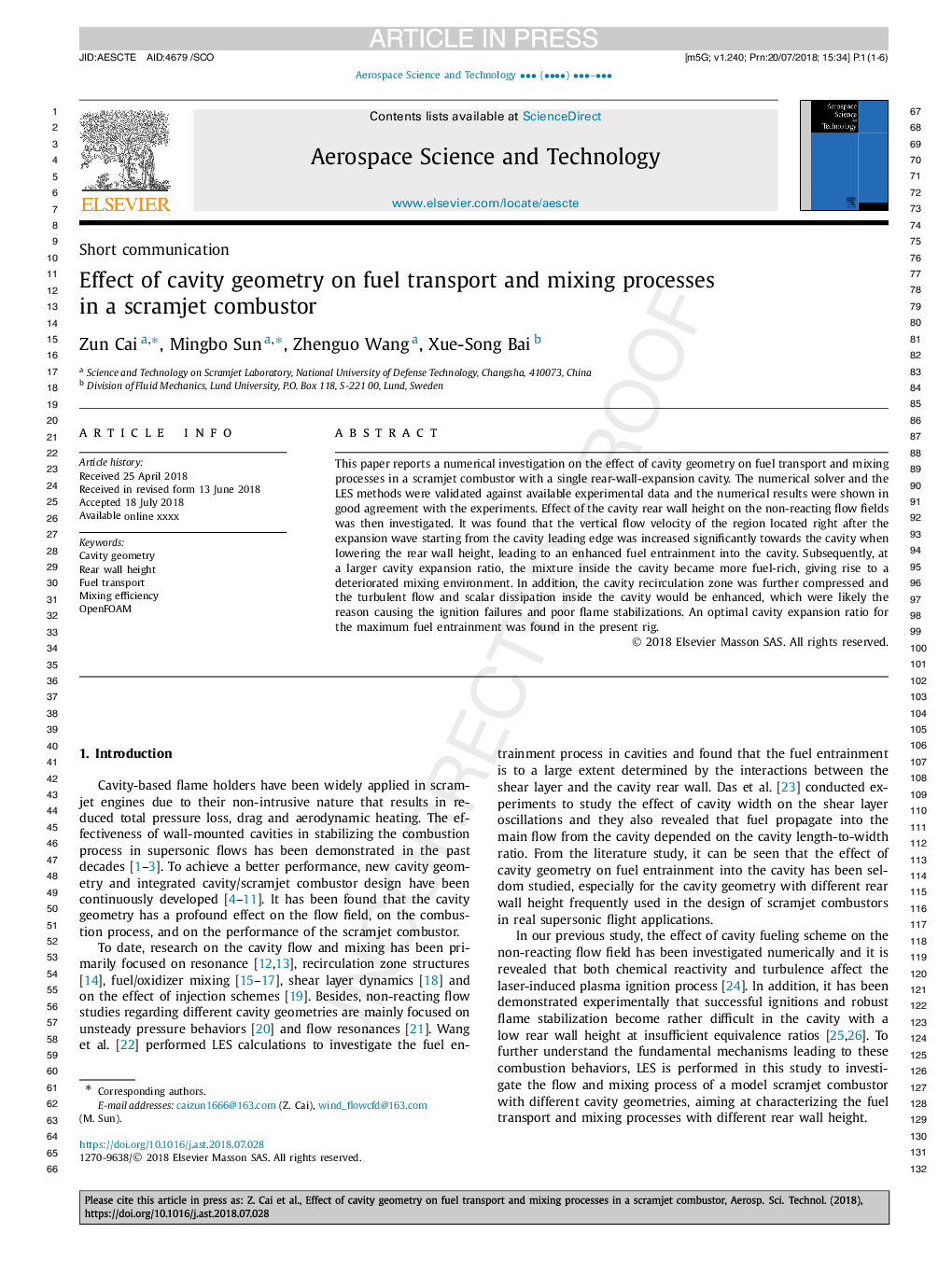| Article ID | Journal | Published Year | Pages | File Type |
|---|---|---|---|---|
| 8057268 | Aerospace Science and Technology | 2018 | 6 Pages |
Abstract
This paper reports a numerical investigation on the effect of cavity geometry on fuel transport and mixing processes in a scramjet combustor with a single rear-wall-expansion cavity. The numerical solver and the LES methods were validated against available experimental data and the numerical results were shown in good agreement with the experiments. Effect of the cavity rear wall height on the non-reacting flow fields was then investigated. It was found that the vertical flow velocity of the region located right after the expansion wave starting from the cavity leading edge was increased significantly towards the cavity when lowering the rear wall height, leading to an enhanced fuel entrainment into the cavity. Subsequently, at a larger cavity expansion ratio, the mixture inside the cavity became more fuel-rich, giving rise to a deteriorated mixing environment. In addition, the cavity recirculation zone was further compressed and the turbulent flow and scalar dissipation inside the cavity would be enhanced, which were likely the reason causing the ignition failures and poor flame stabilizations. An optimal cavity expansion ratio for the maximum fuel entrainment was found in the present rig.
Keywords
Related Topics
Physical Sciences and Engineering
Engineering
Aerospace Engineering
Authors
Zun Cai, Mingbo Sun, Zhenguo Wang, Xue-Song Bai,
